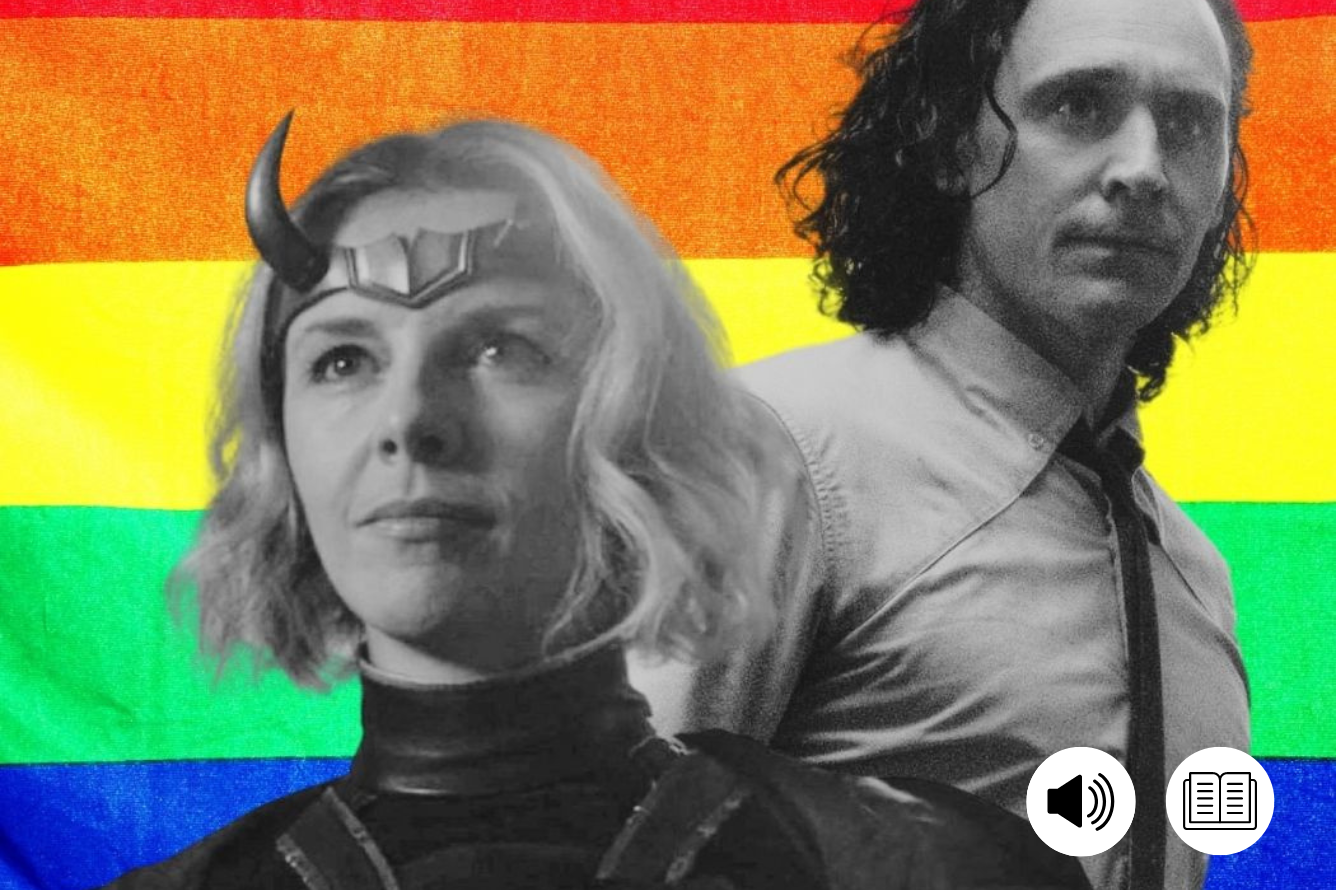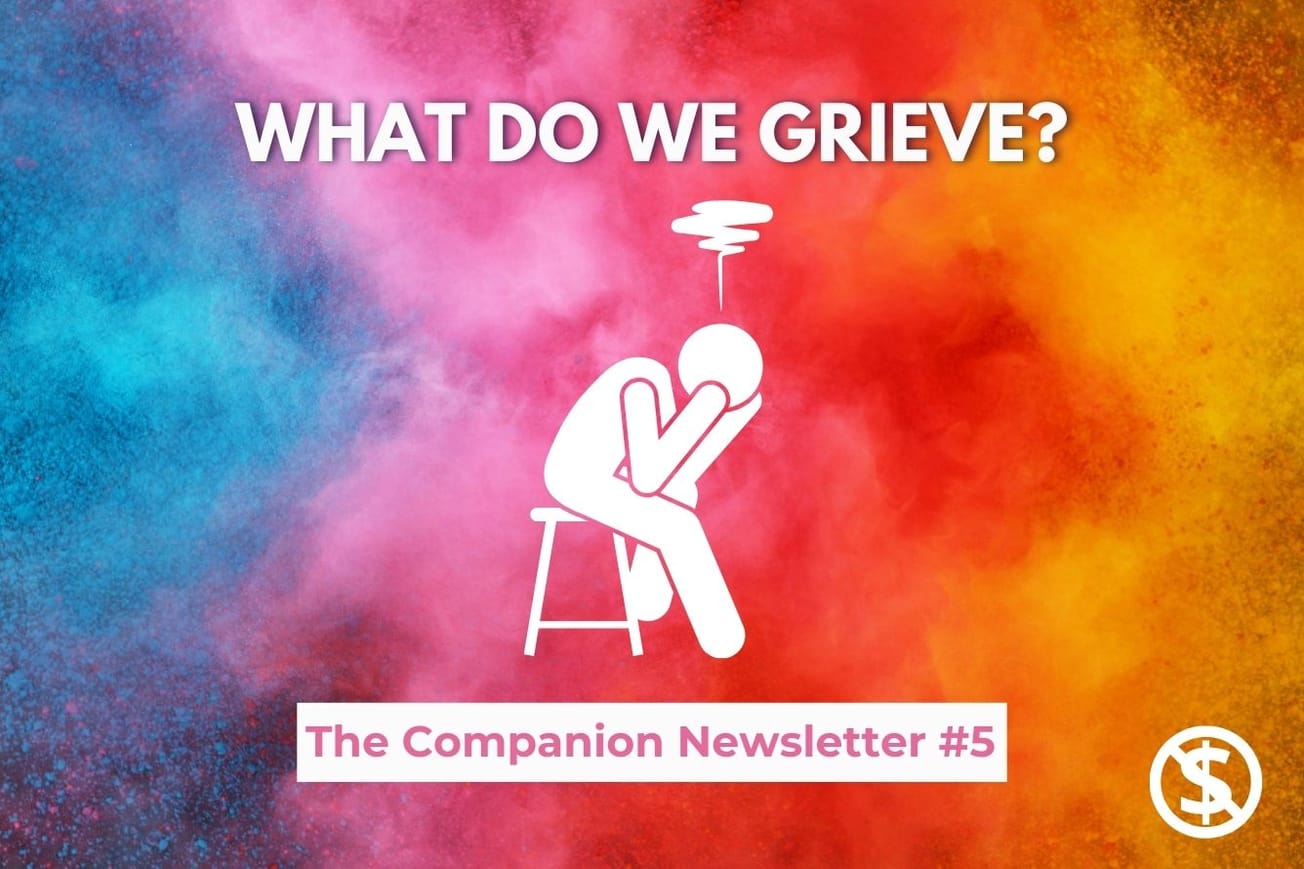At the end of Episode 2 of Disney+’s Loki, the God of Mischief (Tom Hiddleston) gets a good long look at himself – and sees a pair of female eyes staring back. An episode later he coyly admits to being attracted to “a bit of both”, in response to her query about “would-be princesses, or perhaps another prince?”.

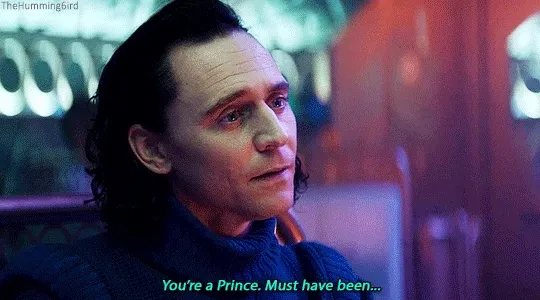
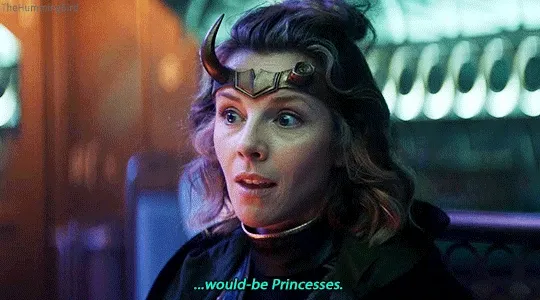
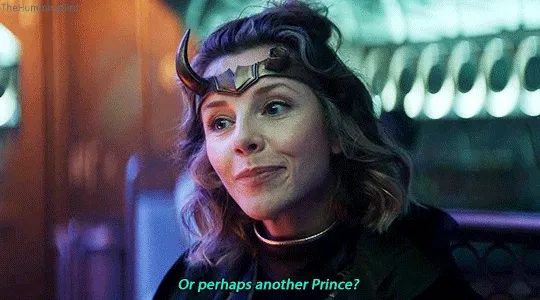
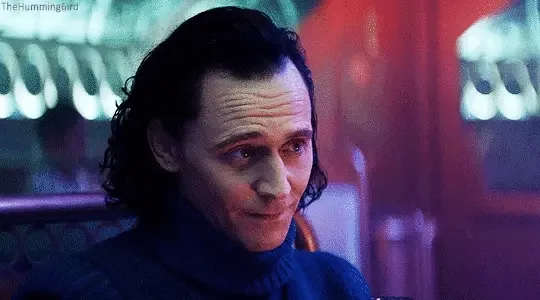
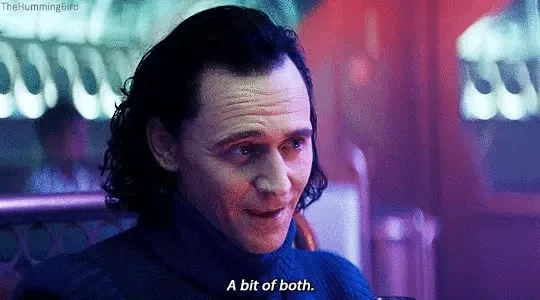
It’s been a long, hard search to get to this point; his tenuous alliance with the Time Variance Authority – a mysterious organization tasked with snuffing out ‘variants’ who threaten to create a new multiverse and destroy the Sacred Timeline – has thus far involved tracking down an alternate version of himself.
Here, he’s tracked them to a Wal-Mart-esque shopping center in flyover-state America, having spoken to this new version of himself through three different possessed bodies. Finally, he sees the true face of the new him (or her), played by Sophia Di Martino; horned, decked out in the finest Asgardian leather, and with distinctly female features.
It’s a wild reveal, one that not only leans into the strangeness of the show but the strangeness of Loki as a character – one that resonates particularly deeply with queer audiences of the Marvel Cinematic Universe.
Ever since his first appearance in Thor (2011), Hiddleston’s take on the character has long played with the tropes of the queer-coded villain: his thin, androgynous features, his defiance of traditional norms of masculinity, the campy, devilish glee with which he moves through the world. He’s the classic queer trickster – a trait as endearing to queer audiences as it is problematic, given society’s nasty habit of equating queerness with villainy.
Further Reading on Loki
Objectively measuring the physical prowess of Marvel’s fan-favorite trickster god, Loki, is no easy task | Just How Strong Is Loki Anyway?
And yet, Loki’s queerness predates the Marvel Cinematic Universe, and even the comics, the character exhibiting queer traits even in his mythological roots. In so doing, he complicates the nature of the queer villain in some interesting ways, both in comic and live-action form. That’s what makes him a queer icon, even if his subtext has only recently become text.
History in Mythology
Before he was the Loki of the Marvel universe, Loki’s origins obviously stem from his history as a vital figure in Norse mythology (don’t tell Marvel, who’ve basically trademarked Loki, even as a mythological being). Even here, his shape-shifting, mercurial nature belies a kind of moving through the world taking the shape of whatever he needs to survive, which is a quintessential trait of queerness.
First off, Loki is an intellectual, a thinker in a culture of fighters, a god which contrasts against the hypermasculine ideas we typically associate with Viking culture and Norse mythology. Rather than solving his problems with his muscles or fighting prowess, he solved them through trickery and deceit – he was the God of Mischief, after all. By this approach alone, he stands apart from the typical expectations of men at the time, an impulse a lot of queer folks can relate to.

One of the most prominent examples of this is in The Prose Edda – namely, the story of Loki and Svadilfari. Svadilfari was an intelligent stallion that belonged to a master builder tasked by the gods to build a wall around Asgard to stave off invaders. Loki and the other gods ask the builder to build the wall in one winter’s time; if he does, they’ll give him Freya as a wife, as well as the sun and the moon. One stipulation? He has to finish it without the help of others.
But when it turns out that the builder might be able to pull off the rush order on time (with the help of Svadilfari), Loki is tasked with distracting him and sabotaging his task. In so doing, he transforms himself into a female horse, luring the male Svadilfari away from his work to, well, frolic. On top of that, Loki grows pregnant from the encounter and bears an eight-legged horse called Sleipnir, who would become Odin’s faithful steed.
That’s just one example of Loki’s history of shape-shifting as a means to perform or inhabit different genders. In different stories, he’s been a fly, a salmon, and even a snake. In the poem Lokasenna, or “Loki’s Quarrel,” Odin references a tale of Loki spending eight winters under the Earth as a woman milking cows, and even bearing children.
Loki’s genderfluid nature is hardly alien to the rest of Norse mythology; he sits within a similarly fluid pantheon of Norse gods. “Even if we leave aside Loki, there are so many other examples of queerness within the mythology, which have just been completely ignored by scholars,” says Amy Jefford Franks, a queer religious historian with a Master’s in Viking and Medieval Norse Studies from the University of Iceland.
Now, while Loki is commonly seen as a gender-bending shapeshifter in Norse mythology, there isn’t a Lady Loki analog to be seen. Rather, Loki’s gender defaults to male when he’s not shapeshifting, and “it’s through his shapeshifting that we see these other characters and other genders,” remarks Franks.

In many ways, Loki illustrates the Norse concept of ergi, a word with strong connotations around the idea of queerness in Viking culture. What that interpretation is is up for debate, says Franks; some scholars believe it means ‘perverted’ or ‘unmanly,’ and it’s used as a pejorative. But for Franks (who is non-binary), ergi slots nicely into a more value-neutral, transgressive kind of queerness: “it’s a good fit for people who basically break the expectations of their gender, and step outside of what they should be doing,” they note.
Many schools of mythology build up a cosmology surrounding the push and pull between order and chaos in the universe, and Norse mythology is no exception. The order is broken and must be restored from the chaos that ensues. In this respect, Loki fits cleanly along those lines: he’s the one who doesn’t play by the rules, who bucks tradition and sets up schemes to trick people into doing things they don’t want to, and must often be stopped.
But despite Loki’s character historically fitting along tropes of transgression, there’s no need to look at that as a bad thing. While Viking culture was intensely queerphobic on the whole, their myths leave room for interpretation when it comes to queerness as a negative value. To queer something, after all, is merely to upend and subvert the codes and traditions of society – sometimes, that can happen for the better.
“You can think of queerness as just another element of human nature or the god’s nature,” Franks observes. Odin, for instance, is missing an eye, and many other gods suffer from physical or psychological differences and flaws they must deal with. In this respect, they queer notions of the gods’ infallibility and omniscience. For all their power, they too have obstacles to overcome.
As for Loki’s trickery being linked to notions of queer deviancy? “Yes, queerness, can come into the trickster element for sure,” Franks says. “But I don’t think that, in and of itself, is a bad thing.” Instead, we can see Loki as an upending of the traditional norms of masculinity endemic to Nordic culture, a means of playing with the gender binary in ways that subverted those mores.
Marvel Comics
Naturally, Loki made his way from the annals of Norse mythology and onto the printed comic book page alongside his brother Thor, when the god of thunder was converted into a Marvel superhero in the early ‘60s by Stan Lee and Jack Kirby. In many ways, he kept the mischievous mannerisms and modus operandi of his mythological inspiration, this time operating purely as a sworn enemy of his brother.
In 2008, Loki was resurrected after the events of Ragnarok in the body of Lady Sif, becoming Lady Loki and being referred to by she/her pronouns. Lady Loki has shown up in various other comic arcs and becomes an established, valid version of the character. Original Sin Vol. 1 #2 quotes Loki as referring to himself as, occasionally, a “fair maiden.” And Mackenzi Lee’s 2019 YA novel Loki: Where Mischief Lies confirms that Loki is, indeed, pansexual and genderfluid in the Marvel Comics universe.

But the biggest confirmation of Loki’s gender and sexual fluidity came in Al Ewing’s 2014 series Loki: Agent of Asgard, in which Loki’s bisexuality and gender fluidity were made explicit. There, he/she frequently switches from a male form (the God of Lies) to a female form (the Goddess of Stories) and back. And yet, the comic makes clear these are not different people: whatever form they take, they’re Loki, “first, last, and always.”
In Agent of Asgard, Odin also uses gender-neutral language when referring to his adopted child, “who is neither my son nor my daughter.” Future series, like Vote Loki and The Unbeatable Squirrel Girl, demonstrate this same free-wheeling gender-bending or at least talk about it. Canonically, in the Marvel universe, Loki was genderfluid long before Disney+ told us so.
The MCU
While the Marvel Cinematic Universe has taken this long to make Loki’s queerness an unavoidable part of the text, Hiddleston’s presentation of the character trafficked in those tropes in ways that were more interesting than we probably give them credit for now. When we first meet him in 2011’s Thor, he’s not a villain, but a trusted friend and ally of his brother Thor. However, he’s poisoned by a childhood spent competing with Thor for their father Odin’s affections; worse still, by the revelation that he’s actually half Frost Giant, and was never truly accepted into Odin’s family.
In a Wired interview, Fordham University professor (and scholar of queer identity in comics) Anthony Michael D’Agonstino likened Loki’s feelings of outsiders to the motivations behind his shape-shifting and deceitfulness:
“For queer people, growing up knowing that others expect and assume you are straight, and having to negotiate that expectation in order to survive, or in order to make your way in the world, we all become tricksters.”
That’s certainly true of Loki here, who can’t match Thor blow for blow. But he can engineer a situation in which Thor is blamed for his bluster and exiled from Earth, opening him up to take the throne. But for all the premeditation on display (it’s later revealed that Loki invited the Frost Giants into the palace early in the film to goad Thor into attacking Jotunheim), Loki lashing out at Odin about his feelings of betrayal ring incredibly earnest:
“You know, it all makes sense now. Why you favored Thor all these years. Because no matter how much you claim to love me, you could never have a Frost Giant sitting on the throne of Asgard!”
It’s a pained expression of his failed efforts to fit into the rigidly-ordered world he was brought into, but to which he never belonged. Queer people, after all, are often denied positions of power (or even personhood) because our very presence upsets the natural order said power upholds. What choice does many of us have but to go outside the rules?

It’s that sense of grievance that fuels Loki’s crusade against Earth in the first Avengers (2012), peppered as it may be by some cringeworthy Joss Whedon dialogue about subjugation being mankind’s natural state. And yet, as the Loki series reveals, so much of that mincing megalomaniacal villainy is a smokescreen for his very real hurt. So much so that, when he’s finally captured and returned to Asgard, he refuses to open himself up or rehabilitate.
In Thor: The Dark World (2013), the only real connection that remains of his family is a strong link to his mother, Frigga (Marvel’s version of Freya, Loki’s wife in some Norse myths). The idea of queer people, particularly gay men, having close relationships with their mothers is yet another trope commonly associated with queer people, especially in media (see Norman Bates). Hell, controversial psychologist Irving Bieber published the pseudoscientific book Homosexuality: A Psychoanalytic Study of Male Homosexuals two years after Psycho’s release, which posited that homosexuality was caused by these too-tight attachments from overbearing mothers.
It’s only after Frigga is killed by the Dark Elves that he begrudgingly teams up with Thor to escape Asgard and seek revenge. It’s there that some of those fraternal bonds begin to heal, though Loki disrupts them by faking his death and eventually taking his father’s place in disguise to sit on the throne of Asgard.

In Thor: Ragnarok (2017), Loki’s greatest chance at redemption comes from the loss of his greatest weapon: his trickery. Unlike previous installments, Thor can smell every trick his brother has up his sleeve, even after they’re both exiled to the planet Sakaar and are forced to escape together. By the film’s end, the two have more or less fully reconciled: Loki no longer needs to hide from or trick Thor, since his brother now fully accepts him (and the two have built a ‘found family’ of sorts with the openly-bi Valkyrie, the shape-shifting Hulk, and Otherized aliens like Korg and Miek).
For many queer people, the quest for acceptance often culminates in the discovery of a ‘found family,’ the network of friends, colleagues, and loved ones that accept our queerness (most often because they’re queer themselves) even when our biological family does not. Sure, Thor’s still along for the ride, but think of him as the initially-resistant sibling who eventually gets it and becomes supportive. The image of Thor, Loki, and their new friends fleeing their now destroyed home, looking for a new one, further supports this image of the found family.
But of course, that sense of family is short-lived, as Loki uses his trickery and deceit one final time, this time for good: to try to kill Thanos before he can kill his brother. He dies in a moment of bravery, a self-actualized queer person dying to protect his found family.
Naturally, that’s not the end of Loki’s story, at least in some form…
Loki
This brings us to Loki, of which only two episodes have aired by the time of this publication. Ever since a promo video leading up to the series premiere showed a Time Variance Authority document that solidified Loki’s “Sex” as “Fluid,” it’s been clear that the show is more willing than ever to acknowledge the canonical fluidity of Loki’s gender, which carries over from both Norse mythology and the comics.
“[Loki’s gender fluidity] always been there in the comics for some time and in the history of the character for hundreds, if not thousands of years,” said Hiddleston in an interview with Inverse; here, in the show, it was high time to acknowledge that.
In the academic sense, Loki’s new job plays with ideas of queerness as well. The TVA exists outside of time, space, and understanding; it’s the kind of place where Infinity Stones can be used as paperweights. His contemporaries/handlers, from Owen Wilson’s Mobius to Gugu Mbatha-Raw’s Ravonna, are presumably hundreds, if not thousands of years old. What use would they have for traditional notions of gender and sexuality? Merely by existing alongside Loki, they queer society’s common understanding of who people are and how they present, or even how they move through the mists of time.

That playfulness with gender extends beyond mere promotional-material paperwork, though; Lady Loki’s appearance at the end of Episode 2 is a prime example of the multiverse making plain what Loki himself has teased through subtext. Her reveal doesn’t shock or perturb the Loki we know – indeed, he immediately accepts her as another version of himself without batting an eye. His comfort around her reflects his own ease with his gender fluidity, and it’s not long before he’s fled the TVA at the end of Episode 2, in hot pursuit of his gender-swapped doppelganger.
Gods only know where Loki will take the character, especially now that the queer-coded subtexts of the God of Mischief have been laid plain in the text of the Marvel Cinematic Universe. But why do so many queer people flock to Loki in the first place, particularly Hiddleston’s portrayal of the character? Why do they make reams of fanart and cosplay and Tumblrs dedicated to him?
Well, simply put, there’s more to Loki than the typical mincing, effeminate, European-coded villain we’re used to in a lot of Western media. From his first appearance, his queerness is tied to his feelings of alienation and isolation from his friends and family – his villainy is chiefly self-serving, a product of pity and self-loathing rather than outright malice. He makes this plain in Episode 1 of Loki: his schemes are a “cruel, elaborate trick conjured by the weak to inspire fear.”
He’s not a deviant, or a “variant,” no matter what his TVA jacket says: He’s an outsider, an antihero who sees little choice but to conquer the world around him before it rejects him and hurts him first. That’s an impulse so many queer people before him have understood and related to, and that’s part of what resonates with audiences even now.
Dating all the way back to his mythological origins, Loki the God of Mischief has long represented a means of overcoming the trappings of societal expectation. Does the world think you’re a man? Become a woman. Does it expect you to fall in line, even if it costs you your selfhood? Don’t play along. For a world interested in keeping queer people in the margins, any attempt to carve out space for yourself might look like villainy to the right person.
The same goes for Hiddleston’s portrayal, which has evolved over the last decade from a jealous, territorial god-king to a humbled, resourceful antihero who learns from their mistakes and adapts to whatever situation he finds himself in – whether he likes it or not.
When Loki describes himself as a “villain” in Episode 1 of Loki, Mobius’ response is interesting: “That’s not how I see it.” And for queer audiences who’ve seen a bit of themselves in Loki – villainy and all – they feel the same way.
This article was first published on June 23rd, 2021, on the original Companion website.


